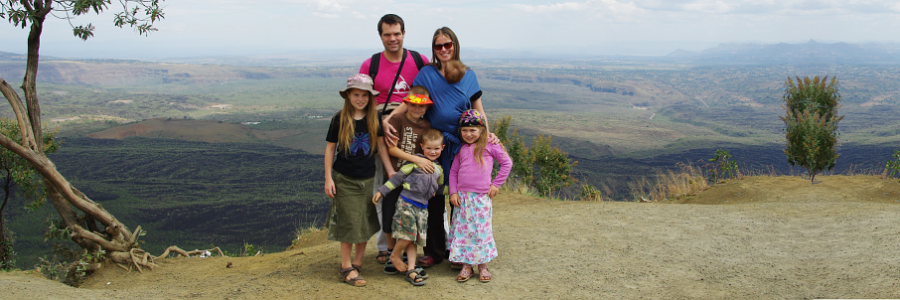A week ago Jurgen and Issa travelled to Maroamboka to pay a visit to the building site of our house. Maroamboka is situated just 5km from Sandrohy.
Papers
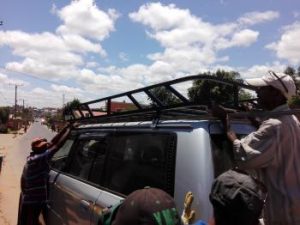 We wanted to visit the side earlier but putting all the car papers in our name took much longer than anticipated. Finally, we received all the papers… that is to say, the temporary papers. Hopefully he official papers will be ready at the end of December 2016. Jurgen’s Malagasy drivers licence is a whole different story. To get the official licence we need a visa that has to be still six months valid. This is not so straightforward as it might sound. When we apply for a visa (for the new year) we receive a paper that says that we have applied. With this paper we can travel but it is not the same as the official visa. Still, the validity of the visa starts as soon as we apply. In other words, if we receive the official visa after 4 months it will only be valid for eight more months. Our hope is that we will get our visa in time to transform the temporary licence to a permanent one.
We wanted to visit the side earlier but putting all the car papers in our name took much longer than anticipated. Finally, we received all the papers… that is to say, the temporary papers. Hopefully he official papers will be ready at the end of December 2016. Jurgen’s Malagasy drivers licence is a whole different story. To get the official licence we need a visa that has to be still six months valid. This is not so straightforward as it might sound. When we apply for a visa (for the new year) we receive a paper that says that we have applied. With this paper we can travel but it is not the same as the official visa. Still, the validity of the visa starts as soon as we apply. In other words, if we receive the official visa after 4 months it will only be valid for eight more months. Our hope is that we will get our visa in time to transform the temporary licence to a permanent one.
Furniture
Slowly but surely the car is equipped with the necessities to deal with the hard conditions in which we are going to use it. One of the changes is a big roofrack (2,30 bij 1,20). Local metalworkers worked hard to make us a strong one. We are very happy with the rack as this gives us the possibility to move our belongings in and out of the area.
Jurgen used the visit to move many of our furniture. On the roof we transported a heavy cupboard together with two small tables. In the car we stacked our chairs and kitchen appliance. Jurgen and Issa left on the 11th of December at about 5 in the morning. After only 45 minutes a police officer stopped them. The load on the roof was no problem but apparently Jurgen needed a permit for the load in the car. Luckily Jurgen managed to persuade the officer to write him a permit on the spot. So, with all the right papers they could continue their trip.
Bad Roads
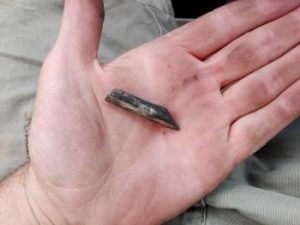 The national roads on Madagascar look very much like Dutch cheese with holes. This makes travelling very tiresome. At noon Issa and Jurgen arrived in a place call
The national roads on Madagascar look very much like Dutch cheese with holes. This makes travelling very tiresome. At noon Issa and Jurgen arrived in a place call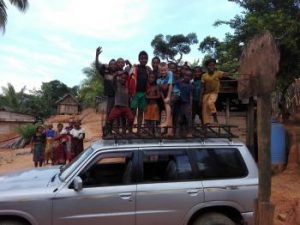 ed Abohimahasoa. There they stopped to spend the night in a hotel. The next day they travelled the second part. Near Ifanadiana one of the tires went flat, a piece of wood stuck right through. Fortunately help was not far. Jurgen stopped the car near one of the many police checkpoints and asked one of the officers for help. The officer first had to put his AK47 aside and then he stopped a lorry. He told the driver that the foreigners needed help. The lorry driver, together with a local, changed the wheel and said that there was no need for Jurgen to get his hands dirty. A few miles further the tire was repaired in Ifanadiana for about € 1,70.
ed Abohimahasoa. There they stopped to spend the night in a hotel. The next day they travelled the second part. Near Ifanadiana one of the tires went flat, a piece of wood stuck right through. Fortunately help was not far. Jurgen stopped the car near one of the many police checkpoints and asked one of the officers for help. The officer first had to put his AK47 aside and then he stopped a lorry. He told the driver that the foreigners needed help. The lorry driver, together with a local, changed the wheel and said that there was no need for Jurgen to get his hands dirty. A few miles further the tire was repaired in Ifanadiana for about € 1,70.
Arrival
It is not hard to hear the car coming. The people of Sandrohy al ready waited at the side of the road. The children sheered and clapped their hands and the adults came to shake hands. After some brief chats the trip continued to Maroamboka, about five kilometres from Sandrohy. This road was a good test for the car. Deep gullies, big rocks and steep climbs (sometimes 35% and more).
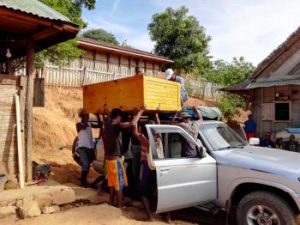
Passing through the last curve the house became visible. Quickly the local people ran towards the car to greet Jurgen and Issa. The car could be parked next to the house of our contact person. After the inspection of the car by all the ‘experts they started to unload the car, which didn’t took long with all the extra hands.
The House
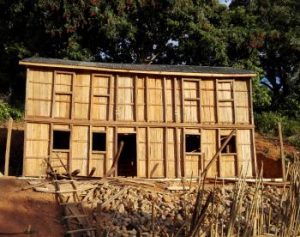
We were already informed about the fact that the builders didn’t fully followed the drawings. Our drawings where way to modest. The house will be bigger because, according to the builder, we need enough space for all our children. On the ground floor we will have a bedroom and a combination of a living room with a kitchen. Going up the stairs we find ourselves on the first floor with a corridor and two more bedrooms for the children. Outside is a separate place to wash ourselves and about 15 metres further the builders dug a toilet.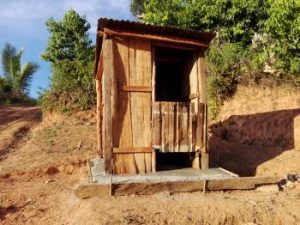 The house is situated next to a water-well with clean water. Most of the time there is enough pressure to install some plumbing. This is something the builder will look at. However, during Jurgen’s and Issa’s visit the well didn’t give much water due to a lack of rain. We will have to see whether we can solve this with a water reservoir that can collect and store rainwater. The house is mainly built of wood from the nearby rainforest. We will have, however, a tin roof and the ground floor is made of cement. The traditional houses have a leaf roof and a wooden or mud floor. This is a set up for trouble during the rainy season. Coming month we will look for a solar panel system. Solar panels are more common as many have a little system to recharge phones and the like.
The house is situated next to a water-well with clean water. Most of the time there is enough pressure to install some plumbing. This is something the builder will look at. However, during Jurgen’s and Issa’s visit the well didn’t give much water due to a lack of rain. We will have to see whether we can solve this with a water reservoir that can collect and store rainwater. The house is mainly built of wood from the nearby rainforest. We will have, however, a tin roof and the ground floor is made of cement. The traditional houses have a leaf roof and a wooden or mud floor. This is a set up for trouble during the rainy season. Coming month we will look for a solar panel system. Solar panels are more common as many have a little system to recharge phones and the like.
Visit
During the two days, Jurgen and Issa visited three villages. The mpanjakas (kings) of two villages where absent. Jurgen brought the promised photos from our last visit and left it together with his greetings for the mpanjaka. The mpanjaka of the last village was present and he welcomed Jurgen and Issa into his house. It was a good meeting in which the mpanjaka did his utmost to understand Jurgen’s official Malagasy. The conversation was relaxed and amusing—especially when Jurgen started to pronounce the differences in several Malagasy dialects. The mpanjaka said that he was very happy to hear Jurgen’s progress in the language.
Meanwhile, Jurgen and Issa are back in Antananarivo.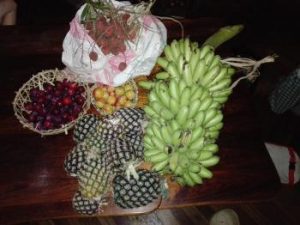 The came back with a lot of fruit given by the locals. We are planning another trip to Maroamboka soon. We will have to bring more furniture and other things like our bed and school material for the children. The builder estimated that we can move as a family somewhere in January 2017.
The came back with a lot of fruit given by the locals. We are planning another trip to Maroamboka soon. We will have to bring more furniture and other things like our bed and school material for the children. The builder estimated that we can move as a family somewhere in January 2017.
We are excited! Finally, after months of preparation, we are going to live among the Tanala.
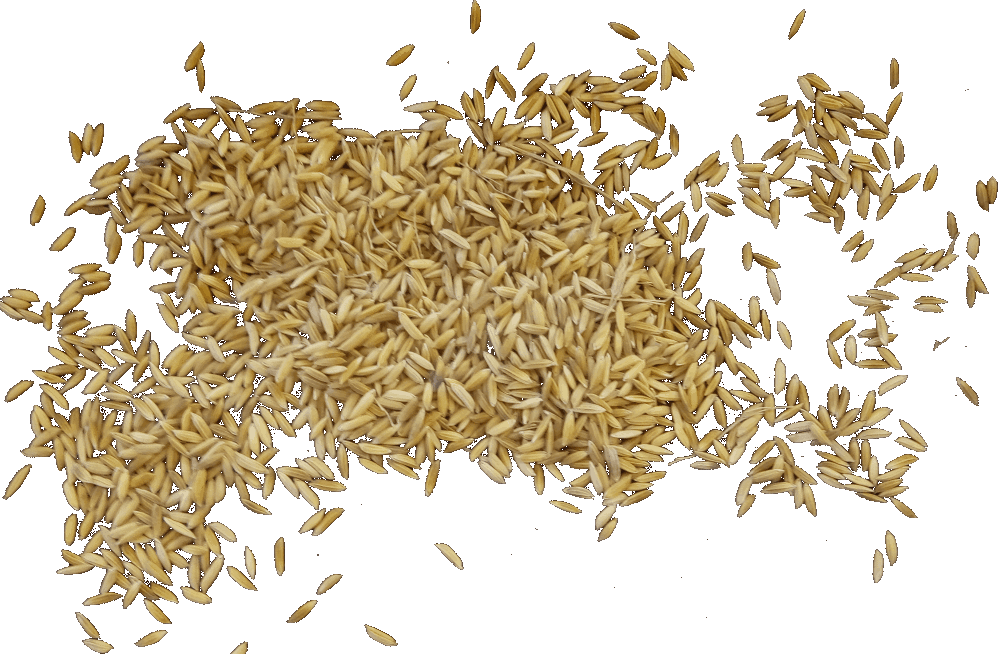
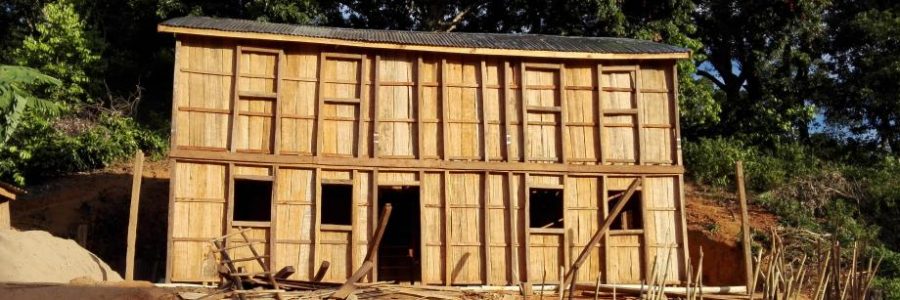

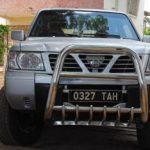 This is it: our Nissan Patrol, built 1999. We had to search a long time for this mechanical vehicle, but now we have succeeded. It is important that the car is not only a four-wheel-drive, but also that it is mechanical rather than electrical. Mechanical cars are easier to repair; if necessary even by non-mechanics. Some simple tools and a phone in hand will come a long way. For the car-lovers among you: the engine is a 4.2 litre diesel, 6 cylinders. Click on the photo to see more pictures.
This is it: our Nissan Patrol, built 1999. We had to search a long time for this mechanical vehicle, but now we have succeeded. It is important that the car is not only a four-wheel-drive, but also that it is mechanical rather than electrical. Mechanical cars are easier to repair; if necessary even by non-mechanics. Some simple tools and a phone in hand will come a long way. For the car-lovers among you: the engine is a 4.2 litre diesel, 6 cylinders. Click on the photo to see more pictures.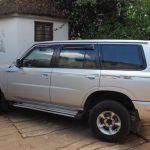
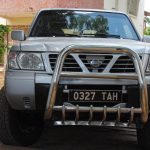
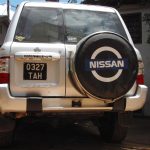
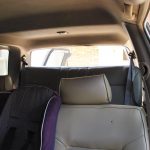
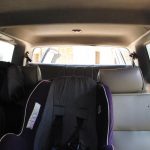
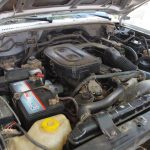
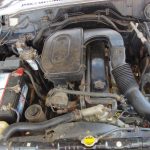
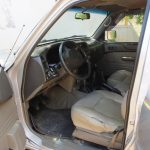
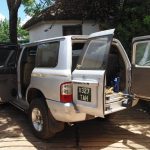
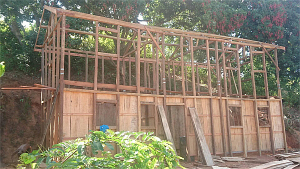 The builders al ready started to build our house. A couple of weeks ago we heard that the house was al ready finished for 50%. Initially we thought that they meant to say that the builder collected 50% of all the material, but no! He send us some pictures, which amazed us. We have good hopes that the house will be finished at the end of this month. However, the builder told us that the rain does make things harder. Still, we expect that we can move, as a family, at the beginning of the new year.
The builders al ready started to build our house. A couple of weeks ago we heard that the house was al ready finished for 50%. Initially we thought that they meant to say that the builder collected 50% of all the material, but no! He send us some pictures, which amazed us. We have good hopes that the house will be finished at the end of this month. However, the builder told us that the rain does make things harder. Still, we expect that we can move, as a family, at the beginning of the new year.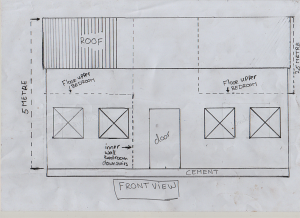 We have provided the drawings for the house ourselves. The builder adjusted a few things… and, as you can see, during the construction things have been changed a bit more. The ground surface will be around the 40m2. On each side of the house we will have a second floor with two bedrooms: One for the girls and one for the boys. The master bedroom will be on the ground floor with at the other side a living room with kitchen. Outside the house we will get a toilet and a washroom. Attached to the house we will get a porch where we can sit and dry our clothes. The builders use local material: the house will be made of wood with a concrete floor and a tin roof.
We have provided the drawings for the house ourselves. The builder adjusted a few things… and, as you can see, during the construction things have been changed a bit more. The ground surface will be around the 40m2. On each side of the house we will have a second floor with two bedrooms: One for the girls and one for the boys. The master bedroom will be on the ground floor with at the other side a living room with kitchen. Outside the house we will get a toilet and a washroom. Attached to the house we will get a porch where we can sit and dry our clothes. The builders use local material: the house will be made of wood with a concrete floor and a tin roof.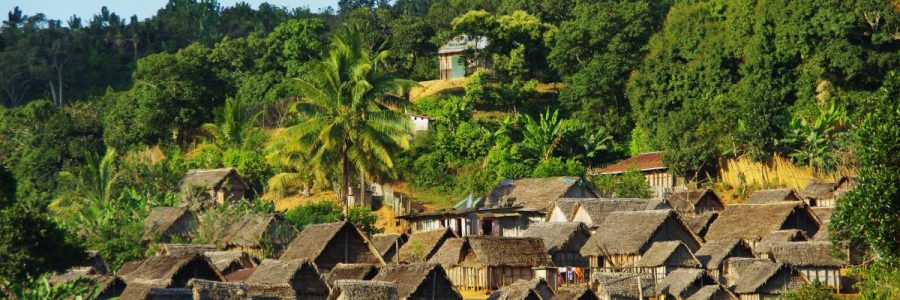
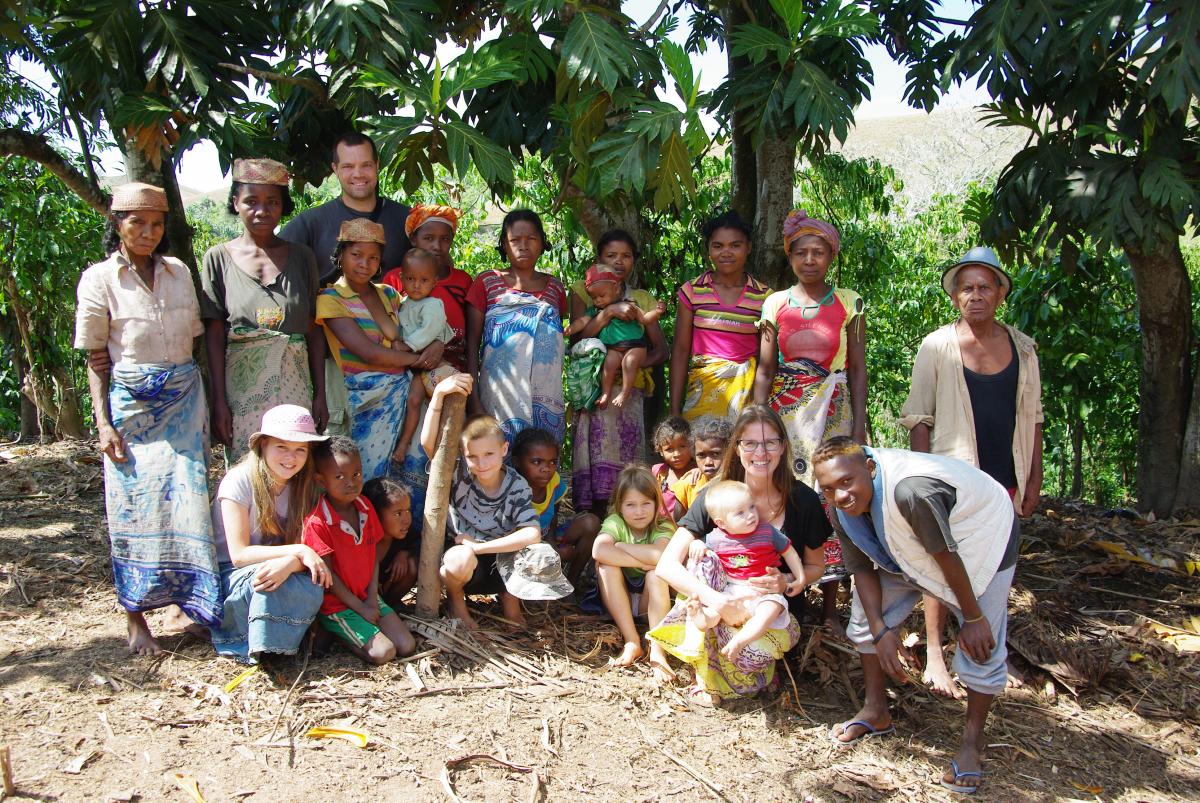



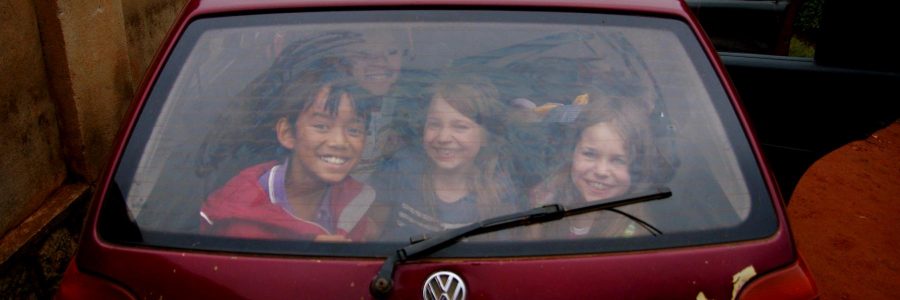
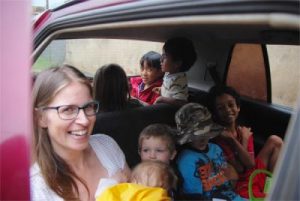 Traveling by normal car is also different. Seatbelts – if there – are hardly being used and there are no children’s car seats. The possible number of passengers is again quite flexible. Only a week ago we saw it no problem to fit 3 adults and 8 children in a car when using the back (a favourite place of our children). It is very baby-friendly: you can drink while traveling!
Traveling by normal car is also different. Seatbelts – if there – are hardly being used and there are no children’s car seats. The possible number of passengers is again quite flexible. Only a week ago we saw it no problem to fit 3 adults and 8 children in a car when using the back (a favourite place of our children). It is very baby-friendly: you can drink while traveling!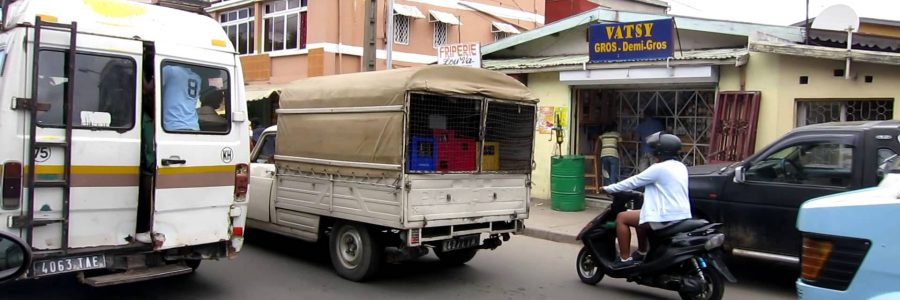
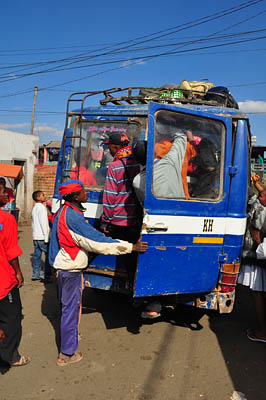 Katja ordered two Dutch books. The were shipped to Madagascar. To collect the parcel she had to travel to Analakely, Tana (17km). Because all Buses were full she had to take a taxi for the first stretch. There she took a bus for the second part. With a second bus she arrived at Analakely. Ones there she had to walk up a hill to a post-office to get a stamp and a signature. With that she walked down to another post-office. There they wanted to see her passport and she had to give two signatures and after receiving another stamp and paying 2000 Ariary she received her parcel. She was able to take a bus that drove back home in one stretch. The trip to collect her parcel took her 4 hours.
Katja ordered two Dutch books. The were shipped to Madagascar. To collect the parcel she had to travel to Analakely, Tana (17km). Because all Buses were full she had to take a taxi for the first stretch. There she took a bus for the second part. With a second bus she arrived at Analakely. Ones there she had to walk up a hill to a post-office to get a stamp and a signature. With that she walked down to another post-office. There they wanted to see her passport and she had to give two signatures and after receiving another stamp and paying 2000 Ariary she received her parcel. She was able to take a bus that drove back home in one stretch. The trip to collect her parcel took her 4 hours.
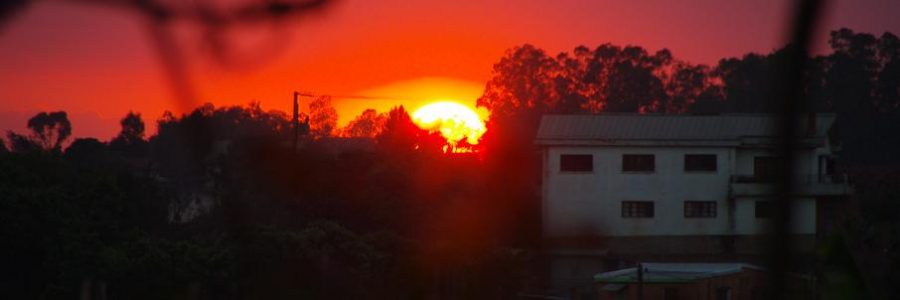
 We were not alone! A total of 22 adults and 28 children joined us and they were all ready to serve the Lord at different places. To see a bigger version of the photo on the richt you can click on it. The first week at ABO we have studied the African culture and values. Among our tutors was a Kenyan man who lived in the UK for several years. This made that he could relate to our western culture as well as to the African culture. It was good to talk with other missionaries—some of who already work in Africa for several months or even years. We have learned a lot from each other.
We were not alone! A total of 22 adults and 28 children joined us and they were all ready to serve the Lord at different places. To see a bigger version of the photo on the richt you can click on it. The first week at ABO we have studied the African culture and values. Among our tutors was a Kenyan man who lived in the UK for several years. This made that he could relate to our western culture as well as to the African culture. It was good to talk with other missionaries—some of who already work in Africa for several months or even years. We have learned a lot from each other.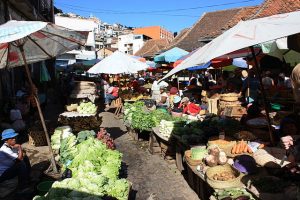 Buying food is fun. Delicious mangos for only € 0,08 and banquettes for only € 0,11. We can buy all sorts of things on the market. This week we bought 1 kilo tomatoes, 1 kilo carrots and about 400 grams of beans for 2400 Ariary (€ 0,67). Other things are more difficult to find. Full grain bread is hard to come by and can only be found in the supermarket but than you will have to be prepared to pay more.
Buying food is fun. Delicious mangos for only € 0,08 and banquettes for only € 0,11. We can buy all sorts of things on the market. This week we bought 1 kilo tomatoes, 1 kilo carrots and about 400 grams of beans for 2400 Ariary (€ 0,67). Other things are more difficult to find. Full grain bread is hard to come by and can only be found in the supermarket but than you will have to be prepared to pay more.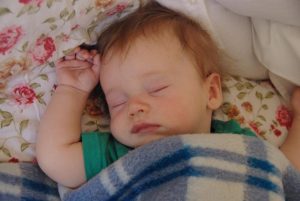 We love to see all the learned theory in action. At the same time we are very tired at the end of the day. This ‘end of the day’ is about 6 pm—the sun has gone under by then and will be up as early as 05:20. Thus our day starts at 6 am and around 9 pm we are already in our snug beds… talking about which…
We love to see all the learned theory in action. At the same time we are very tired at the end of the day. This ‘end of the day’ is about 6 pm—the sun has gone under by then and will be up as early as 05:20. Thus our day starts at 6 am and around 9 pm we are already in our snug beds… talking about which…